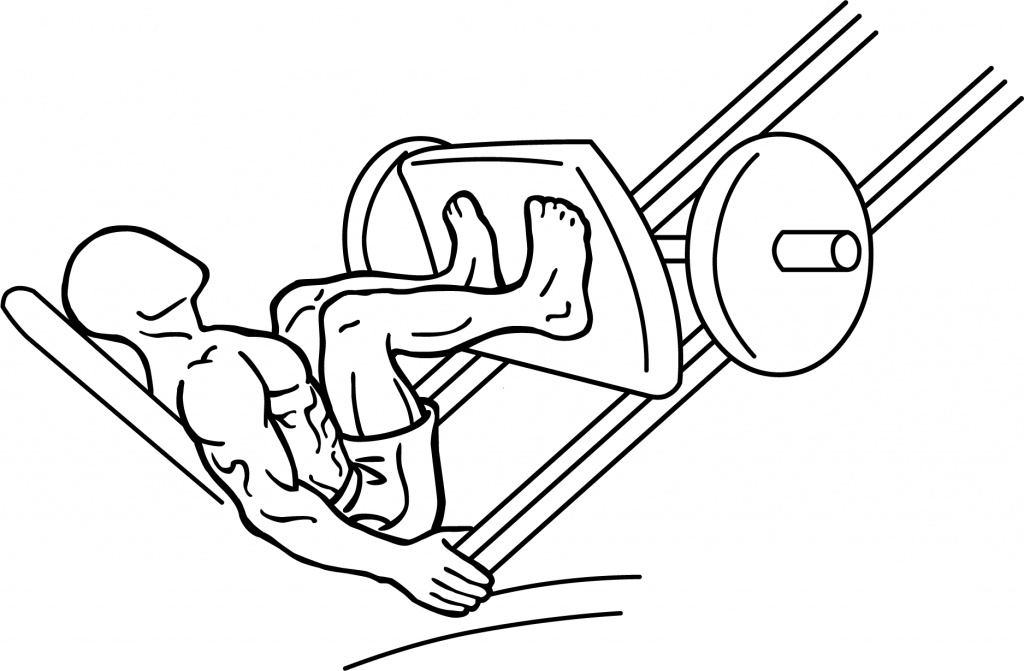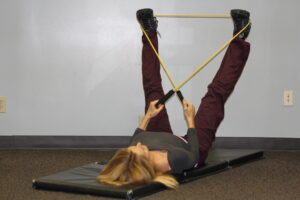In the realm of fitness, few things elicit as much satisfaction as the raw power and strength you can harness from your lower body. Whether you’re a sprinter looking to shave milliseconds off your best time, a basketball player aiming to jump higher for those crucial rebounds, or just someone who savors the feeling of pushing your physical limits, explosive leg workouts are a game-changer.
Here, we’ll explore the detailed benefits of such workouts, essential exercises you should be doing, how to structure an efficient leg day, dietary considerations, and even how to seamlessly weave explosive leg routines into your broader fitness plan. By the end, you’ll not only understand the science behind leg power but will also be armed with a comprehensive leg day roadmap for your fitness endeavors.
Benefits of Explosive Leg Workouts
Before we jump straight into the exercises, it’s vital to understand the why behind the effort. Explosive leg workouts offer an array of benefits beyond just a set of sculpted quads.
1. Increased Power and Speed
Athletes of all kinds, from sprinters to high jumpers, can significantly elevate their performance by focusing on enhancing their explosive leg strength. The ability to generate quick bursts of power from the legs is crucial not only for the initial sprint off the line but also for achieving the necessary momentum for a successful high jump. By dedicating time and effort to strengthening your lower body, you are effectively honing your secret weapon that can propel you to new heights in your athletic pursuits.
2. Enhanced Strength and Muscle Definition
Developing leg muscles goes beyond looks; it’s about enhancing functionality. Well-trained quadriceps, hamstrings, and calf muscles play a crucial role in supporting the body through various movements, whether it’s the mundane tasks of daily life or the rigorous demands of high-intensity workouts. By strengthening these muscle groups, individuals can improve their overall physical performance, stability, and endurance, leading to a more resilient and capable physique.
3. Improved Athletic Performance
For sports that demand agility, such as basketball, soccer, or tennis, where quick movements, sudden direction changes, and explosive jumps are crucial, developing strong and powerful leg muscles becomes a game-changer. Having explosive leg power not only enhances your ability to make key plays but also boosts your overall performance on the field or court. By focusing on training your legs for speed, strength, and explosiveness, you equip yourself with the tools needed to excel in dynamic and fast-paced sports environments.
4. Increased Calorie Burn
Intense leg workouts, such as squats, lunges, and deadlifts, demand a substantial amount of energy expenditure. This leads to an elevated calorie burn not only during the workout but also in the post-exercise period, known as excess post-exercise oxygen consumption (EPOC) or the “afterburn effect.” This increased metabolic rate can be particularly advantageous for individuals aiming to shed excess weight or sustain a favorable body composition over time.
5. Better Balance and Stability
Explosive training doesn’t just build muscle; it also enhances your balance and stability. These workouts often engage the core and stabilizer muscles, teaching your body to maintain control during dynamic movements. This improvement in balance is crucial not only in sports but also for everyday activities, reducing the risk of falls and injuries.
6. Increased Metabolic Rate
Integrating explosive leg exercises into your routine can also boost your metabolism. Such high-intensity training promotes excess post-exercise oxygen consumption (EPOC), meaning your body continues to burn calories at an elevated rate long after the workout is over. This can contribute to more effective weight management and body composition changes over time.
7. Enhanced Coordination and Agility
Explosive leg workouts require a significant amount of coordination and agility. These movements often involve complex motor patterns that improve neurological efficiency and the body’s ability to coordinate movements quickly and accurately. For athletes, this means better performance on the field or court. For others, it translates to improved efficiency and safety in everyday physical tasks.
8. Increased Joint Health and Function

Your legs are not giving out. Your head is giving out. Keep going!
– Someone with huge legs
Properly executed explosive movements can also support joint health. By strengthening the muscles around crucial joints like the knees and ankles, you reduce the strain placed on these joints and the potential for injury. Additionally, many explosive exercises improve joint mobility and flexibility, contributing to a smoother, more efficient range of motion.
9. Psychological Benefits
Lastly, explosive leg workouts offer significant psychological benefits. These workouts often serve as a confidence booster, offering tangible progress in strength, speed, and skill. The sense of accomplishment after mastering a complex movement or reaching a new personal best can provide a positive outlook on exercise and promote long-term commitment to a fitness regime.
Leg Exercises to Include
Now that we understand the benefits, here are some key moves you should be including in your leg day.
Squat Jumps
Squat jumps not only target your lower body muscles—including your quads, hamstrings, calves, and glutes—but also engage your core for stability. To perform a squat jump, start in a regular squat position. Lower yourself down, keeping your back straight, then explosively jump into the air as high as you can. When you land, make sure to absorb the impact by going back into the squat position. This exercise helps improve your explosive strength, making it a great addition to any plyometric workout.
Box Jumps
Box jumps are a higher-intensity version of squat jumps and require a box or a stable platform. Begin by standing in front of the box with your feet shoulder-width apart. Perform a slight squat and use your legs’ explosive power to jump onto the box. Land softly with both feet on the box and stand up straight. Step back down and repeat. The height of the box can be adjusted to increase difficulty, which makes this exercise versatile and challenging for individuals at different fitness levels.
Plyometric Lunges
Plyometric lunges, also known as jumping lunges, add an explosive element to the traditional lunge exercise. Start in a standard lunge position with one foot forward and the other extended back. The front knee should be bent at a 90-degree angle. From this position, explosively jump up, switch legs in the air, and land with the opposite leg forward in a lunge position. This exercise targets each leg individually, which can help address imbalances. It also improves stability, agility, and coordination.
Power Cleans
Power cleans are a dynamic lift that involves pulling a weight from the floor and “catching” it in the front rack position at shoulder height. This exercise is complex and requires proper form to be executed safely. Start with your feet hip-width apart and grip the barbell just outside your legs. Lift the bar by extending your hips and legs, then shrug your shoulders and pull yourself under the bar, catching it in a squat. Stand up straight to complete the movement. Power cleans work the entire body, with a particular focus on the legs, hips, and shoulders. They are excellent for developing explosive power and strength.
Workout Routine Suggestions
Designing an efficient leg day routine is crucial, as overexertion can lead to injury. Here are some ways you can customize your workout plan.
Customizing Your Workout Plan
For Beginners
Start with a foundation of proper technique and gradually increase the intensity of your workouts. Aim for:
- 3-4 sets of 8-10 reps for each exercise. Focus on mastering the form before adding intensity.
- Rest for 45-60 seconds between sets to allow for recovery without completely cooling down.
- Progression: Once you can comfortably complete your sets with good form, increase the number of reps or add a light weight to maintain progress.
For Intermediate Athletes
Intermediate routines should build on the basics, incorporating increased volume and intensity:
- 4 sets of 10-12 reps for each exercise. Prioritize sharp, explosive movements over using heavier weights.
- Rest for 30-45 seconds between sets to challenge your endurance and recovery.
- Mix it up: Begin to introduce variations of the basic exercises to challenge your muscles in new ways and avoid plateaus.
For Advanced Practitioners
At an advanced level, focus on maximizing power output, speed, and agility:
- 5 sets of 12-15 reps with minimal rest between sets—20 seconds or less to push your cardiovascular and muscular endurance.
- Challenge yourself: Incorporate heavier weights or more complex movements, focusing on maintaining explosive power and form throughout the set.
- Variety and specificity: Tailor your workouts to your specific goals, whether that’s improving athletic performance or building muscular endurance. This might include using plyometric tools, weights, or uneven surfaces.
The Crucial Role of Warm-Ups

A thorough warm-up primes your muscles for the intense activity ahead and can significantly decrease your chances of injury. It’s not just about getting your heart rate up—it’s also about ensuring that your joints and muscles are ready for the explosive movements to come. Begin with 5-10 minutes of light cardio, like jogging or skipping rope, followed by dynamic stretches that target the legs, hips, and back. Incorporate mobility exercises such as leg swings, walking lunges, and high-knees to fully prepare your body for the workout.
Recovery and Post-Workout Care
Recovery is just as important as the workout itself. After completing your routine, spend time cooling down with 5-10 minutes of light cardiovascular exercise to help flush out lactic acid. Follow this with a comprehensive stretch focusing on flexibility and lengthening the muscles you’ve worked. Incorporating foam rolling or using massage tools can further enhance recovery by reducing muscle soreness and increasing blood flow.
By adjusting the intensity, volume, and complexity of your workouts based on your current fitness level, you can ensure a balanced progression towards your fitness goals. Remember, consistency and proper form are the keys to success in developing explosive leg strength and power.
Nutritional Tips for Optimal Performance
To achieve peak performance during your workouts, particularly on intense leg days focusing on explosive power, it’s essential to adopt a tailored nutritional strategy. This section expands on how optimizing your diet can support muscle strength, recovery, and overall athletic performance.
Key Nutrients for Muscle Performance
Protein: The Building Block of Muscle
Protein is critical for muscle repair and growth. After a demanding leg workout, consuming high-quality protein helps repair microtears in muscle fibers, leading to increased muscle mass and strength. Sources such as lean meats, fish, dairy, and plant-based proteins like lentils and quinoa are excellent options.
Carbohydrates: Fuel for Explosiveness
Carbohydrates are your body’s primary energy source during high-intensity workouts. They replenish glycogen stores in your muscles, which are depleted during exercise. Integrating a mix of simple and complex carbs in your diet ensures a steady energy supply. Fruits, vegetables, whole grains, and legumes offer the carbs needed for energy and recovery.
Fats: Essential for Long-Term Energy
While not as immediately impactful for quick, explosive movements, healthy fats are crucial for long-term energy, hormone production, and cellular repair. Avocados, nuts, seeds, and fatty fish contribute to a well-rounded diet that supports overall athletic performance.
Hydration: The Key to Optimizing Performance
Hydration cannot be overstated in its importance for athletes. Water regulates your body temperature, lubricates joints, and helps transport nutrients to give you energy and keep you healthy. Aim for at least 8 glasses of water a day, more if you’re actively training, to ensure optimal performance and recovery.
Recovery Nutrition: Timing and Composition
Post-workout nutrition is pivotal in recovery. Aiming for a meal or snack containing both proteins and carbohydrates within 45 minutes to an hour after exercising can significantly enhance muscle regeneration and glycogen replenishment. Recovery shakes or smoothies can be an efficient way to deliver these nutrients quickly.
Supplements for an Edge in Performance
While whole foods should always be the foundation of your diet, certain supplements can offer additional benefits:
- Creatine: Supports muscle energy during high-intensity, short-duration exercises like sprinting and lifting.
- BCAAs: Branched-chain amino acids can reduce muscle soreness and accelerate recovery.
- Beta-Alanine: May enhance performance in high-intensity interval training by reducing fatigue.
Strategic Meal Planning for Athletes
Planning your meals around your training can ensure you’re adequately fueled and recovered for each session. Incorporate a variety of nutrient-dense foods across all food groups to cover the spectrum of vitamins and minerals necessary for peak performance. Adjust portion sizes and timing based on your specific training demands and body response.
By focusing on a comprehensive nutritional strategy that prioritizes protein and carbohydrate intake, stays vigilant about hydration, leverages the timing of recovery nutrition, considers supplementation for an extra edge, and employs strategic meal planning, athletes can support their training efforts for improved conditioning, faster recovery, and enhanced performance on explosive leg days and beyond.
How to Include Explosive Leg Workouts to Your Everyday Gym Routine?
Incorporating explosive leg workouts into your regular fitness routine plays a critical role in enhancing overall leg strength, agility, and performance. The key to successfully including these workouts lies in strategic planning, ensuring consistency, and allowing for adequate recovery. Here are expanded and detailed strategies to weave explosive leg exercises seamlessly into your gym regime:
Establishing a Balanced Weekly Training Plan
- Designate Specific Leg Days: Commit to at least two days each week exclusively for leg training to ensure focused and intense workouts. These sessions should be spread out to allow muscles to recover and rebuild stronger.
- Mix Intensity Levels: Balance sessions between high-intensity explosive workouts and lower-intensity endurance exercises. This variety prevents overtraining, reduces the risk of injury, and aids in achieving a well-rounded athletic performance.
- Plan for Recovery: Recovery is an integral part of any training regimen. Ensure you include at least 48-72 hours of rest following intense explosive leg workouts to give your muscles the downtime needed to repair and grow. This might mean planning lighter activities or upper body training days in between your leg days.
Tactical Workout Suggestions
- Start with a Dynamic Warm-up: Begin every leg workout with dynamic stretching and light cardio to prepare your muscles and joints. This can include exercises like lunges with twists, high knees, or leg swings.
- Incorporate a Variety of Exercises: Utilize exercises that target different parts of the leg and incorporate various movement patterns. Squats, lunges, box jumps, and sprinting drills are great examples. Variation not only enhances overall leg strength and performance but also keeps the workouts engaging.
- Adjust Volume and Intensity: Based on your current fitness level and goals, adjust the number of sets, repetitions, and the intensity of each exercise. Progressive overload is essential for continual improvement, but so is listening to your body and preventing overexertion.
Tips for Enhancing the Effectiveness of Your Leg Workouts
- Employ Plyometric Training: Plyometrics, including jump squats and power skipping, are excellent for building explosive strength. These movements improve your power output by training your muscle fibers to contract more quickly and forcefully.
- Focus on Form: Prioritizing proper form above lifting heavier weights or completing more repetitions minimizes the risk of injury and ensures you’re effectively targeting the intended muscle groups.
- Utilize Weights: Incorporating weighted exercises, such as squats and lunges with dumbbells or a barbell, can increase resistance, thereby enhancing strength and power development.
Recovery Strategies
Understanding the importance of recovery will maximize your training results and longevity in fitness. Employ techniques such as foam rolling, stretching, and participating in active recovery sessions (like light cardio or yoga) to aid muscle recovery and performance.
Frequently Asked Questions (FAQ)
What is the best time to do leg workouts for explosiveness?
Mornings can be ideal, as testosterone levels are naturally higher, promoting muscle growth and strength. However, the best time is when you feel most energized and can give your full effort.
Can women benefit from explosive leg workouts?
Absolutely! Regardless of gender, strong leg muscles are integral to overall stability and strength, and especially for athletes of any sport.
Do I need a personal trainer to start explosive leg workouts?
While a trainer can certainly provide guidance, there are many resources, both online and in print, where you can learn correct form and technique. Starting with bodyweight and gradually adding resistance can also help prevent injury.
Can explosive leg workouts help with weight loss?
Explosive leg workouts are highly effective for weight loss as they combine strength training with cardiovascular effort, leading to high calorie burn during and after the workout due to the post-exercise oxygen consumption (EPOC) effect. These workouts can increase your metabolism, contributing significantly to fat loss while building muscle.
How often should explosive leg workouts be incorporated for best results?
For optimal results, incorporating explosive leg workouts 2-3 times per week is recommended, depending on your overall fitness level and recovery capacity. It’s crucial to allow adequate recovery between sessions to avoid overtraining and to facilitate muscle growth and repair.
Can explosive leg workouts improve sports performance?
Yes, incorporating explosive leg workouts can significantly enhance sports performance by improving power, speed, and agility. These workouts strengthen the muscles and the neuromuscular connections, allowing for quicker and more powerful movement patterns which are beneficial in almost every sport.
Conclusion
Explosive leg workouts are not just for athletes and gym buffs looking to show off their thighs on Instagram—they’re for anyone seeking to enhance their physicality and boost their performance in everyday life. By understanding the principles of plyometric and power-based movements, and by dedicating time to these exercises, you’re setting yourself up for a stronger, faster, and more agile version of you. Take the jump, quite literally, and watch as your lower body transforms from the ground up.








